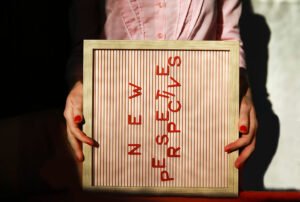
“If you had more money, you could do more good. If you do better communications, you will have more money.” So says Tom Ahern, ABC, Ahern Communications.
And Tom knows what he’s talking about. He’s one of North America’s leading experts in donor communications. He’s reviewed thousands of newsletters and case statements—and writes books about both. His case statements and newsletters produce money.
Check out these tidbits from Tom’s free e-news.
Sad but true: Most donor communications are built to fail (Ahern e-news #7.3, 06-18-09) “Does your boss or board chair get to approve your stuff? Abandon all hope, ye who enter here . . . Most bosses and boards wouldn’t know a piece of effective communications if it kicked them in the shins . . . I’ll be brutal and brief: being able to read and write does not qualify you as a communications expert. There is an immense body of knowledge that the untrained never encounter, nor even suspect . . . Chief among their sins of ignorance? They do not know (care? accept?) that fundraising is nothing more than a branch of sales and marketing (made occasionally more fragrant by the odor of sanctity that “doing good” gives off).” Read the rest of this e-news, archived here.
What is news? (Ahern e-news 6.9, 03-3-09) “You have a donor newsletter. You want it to help you retain donors and bring in additional gifts. So, what kinds of stories should you run? One key reason donors will pay more than a few seconds’ attention to something in your newsletter has nothing to do with you…and everything to do with the programming of the typical human brain…. Here’s the natural law: neuroscience has determined that humans respond autonomically to anything new in our environment. And it doesn’t matter whether that new thing is important or not. A speck of pepper in a bowl of oatmeal attracts the mind’s eye just as firmly as an elephant walking on the lawn…. An encounter with new information stimulates a pleasure center in the human brain…Sadly, most donor newsletters…take little or no advantage of the mind’s love affair with the new.”
Does your stuff suffer from jargon breath? (Ahern e-news #6.6, 01-06-09) “’At risk’? ‘Accessible’? ‘Services’? I hear what you’re saying. I just can’t see what you’re saying. And that’s the problem . . . What’s wrong with jargon? Just about everything, once it leaves your office. Jargon is for specialists only. It’s convenient professional shorthand…. Every industry has its jargon…. Outsiders—and virtually all donors are outsiders—and do not get jargon . . . Sure, outsiders understand the words at a superficial level. But jargon does not, will not, cannot ring the best that is the donor’s heart. Jargon is always clinical, abstract language. And worse, it tells no tales.”
Sign up for our free newsletters
Subscribe to NPQ's newsletters to have our top stories delivered directly to your inbox.
By signing up, you agree to our privacy policy and terms of use, and to receive messages from NPQ and our partners.
The new donor-centric you, courtesy of Dale Carnegie (Ahern e-news #6.4, 12-02-08) “Stop focusing on what you want. Start focusing on what your donors want. The following statement is the only advice you’ll ever need to build a successful brand among your donors. And it’s from an author who published his best-seller, How to Win Friends and Influence People, in 1936 in the depths of the Great Depression. ‘You’ll have more fun and success,’ Dale Carnegie said, ‘when you STOP trying to get what you want, and START helping others get what they want.’ Enlightened self-interest: Be useful to others, and they will amply reward you. So how can you be useful to donors?”
Do photos need captions? (Ahern e-news 6.3, 11-18-08) “Do birds need wings? Yeah, mostly they do. . . Captions are considered essential, not optional, in professional journalism. Where you simply NEVER, EVER run a photo without an explanatory caption. (Relevance to your life? A donor newsletter is, in part, journalism: i.e., news reporting.)”
How to make your billion-dollar goal? (Ahern e-news 5.9, 07-07-08) “Universities: Ban deans from the case approval loop. Hospitals: Same goes for the chief of staff.” That’s a shocker, eh? But it links to the first snippet in this column, the one about most donor communications are built to fail. Why? Because people who don’t know what they’re doing get to comment! You’re writing, but they’re not reading.
Improve your odds. (Ahern e-news 4.4, 04-20-07) “Let me first remind you of one thing that’s kind of special about fundraising communications. They are NOT really about trying to get people to read. They ARE about trying to get people to ACT. If you can get people to act as you’d like them to (send a check, volunteer, ask for information about bequests, or such) MINUS much reading, then fine: mission accomplished . . . So here’s the secret to keeping them reading…. In the very first sentence, tell me something either NEW or INTERESTING. And try to keep it very SHORT . . . Don’t write fancy, either. Just say things straight out; in SHORT, simple, jargon-free sentences. Subject, verb, object. Then do it again. And again . . . Recognized master Joseph Sugarman says, ‘The purpose of the first sentence is to get you to read the second sentence.’ And the purpose of the second sentence is to get you to read the third. And so on. Each sentence is a baby step to the next sentence.” Read the rest.
My English teachers didn’t teach me to write to communicate. Neither did yours. So learn the right stuff. Practice and practice and make it better and better.
If you learn the right stuff—and do it really really well—you might end up like this hospital in Minnesota: Its newsletter used to generate $5,000 per issue. And now, the hospital’s newsletter generates $50,000 per issue—just by following the rules of good newsletters . . . and doing so very very very well.













